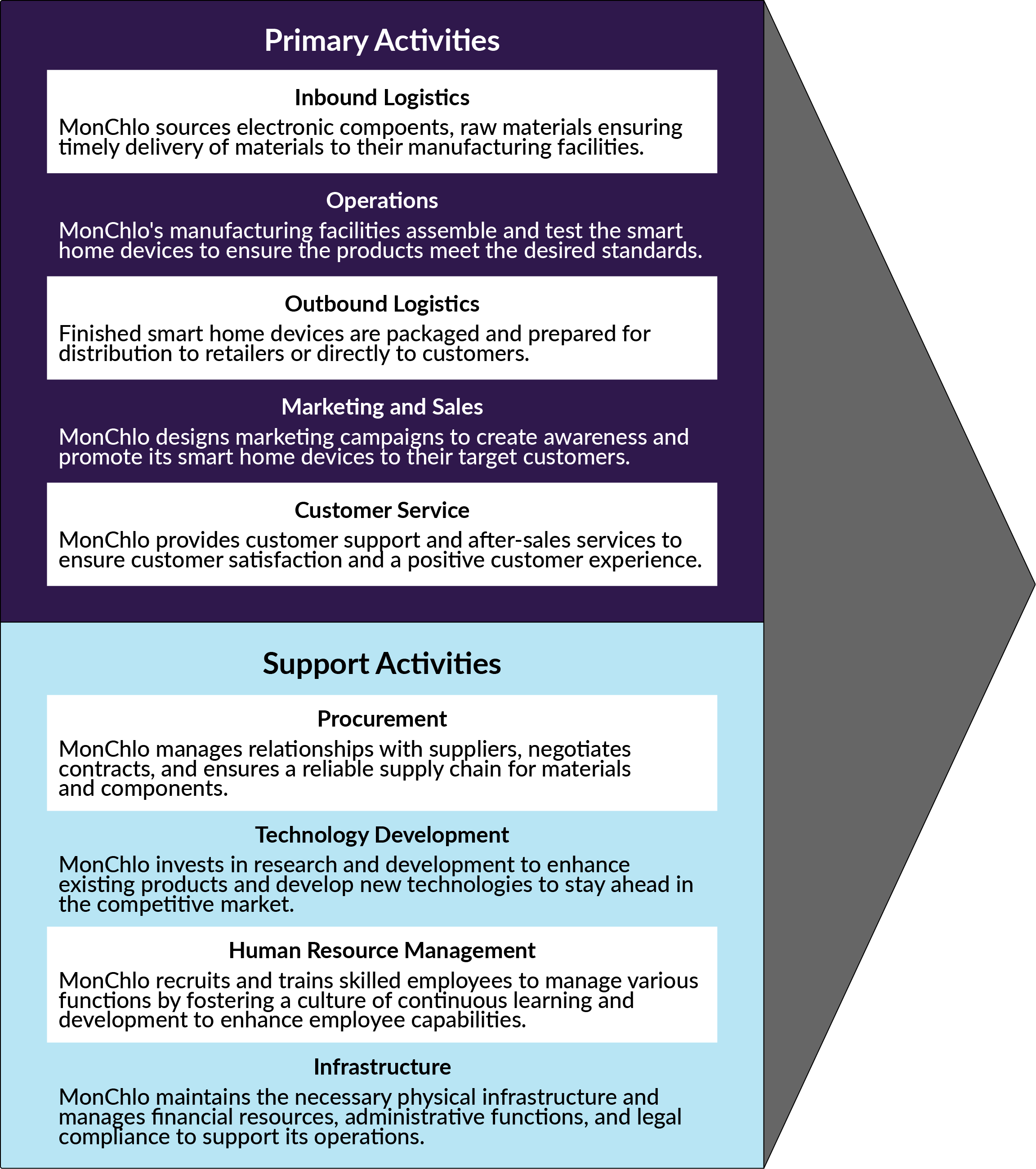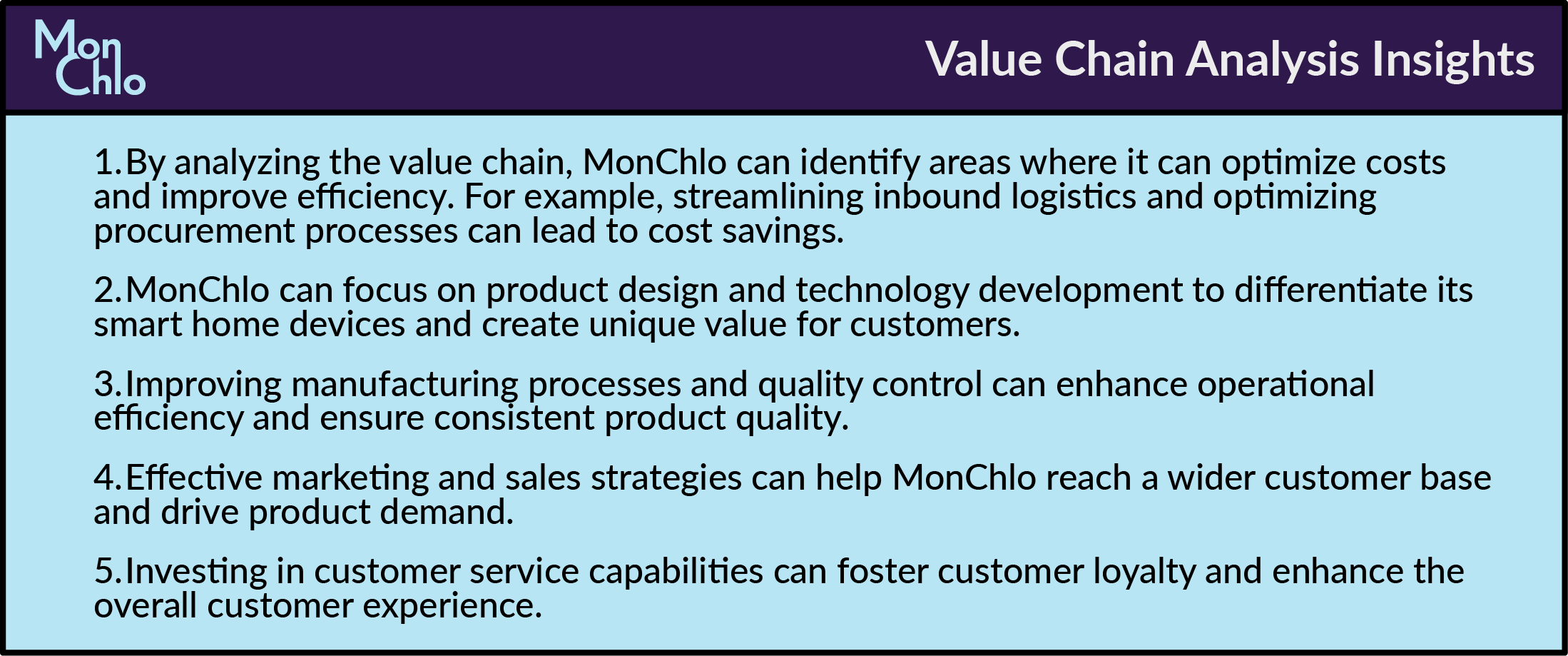Value Chain Analysis
Value chain analysis is a strategic management tool that allows organizations to examine the activities and processes within their operations to identify opportunities for value creation and cost optimization. It involves analyzing the sequence of activities that are performed to bring a product or service from its conception to the delivery to customers. Value chain analysis helps organizations understand the activities that contribute to delivering value to customers and how these activities can be optimized to gain a competitive advantage.
The value chain consists of two primary types of activities:

Strategic operations management is concerned with managing the operations of an organization to achieve its strategic objectives. Value chain analysis is connected to strategic operations as it helps organizations identify areas within the value chain where they can gain a competitive advantage, improve operational efficiency, reduce costs, and enhance overall performance. By analyzing each activity within the value chain, organizations can determine which activities are critical for delivering value to customers and which activities may have potential for improvement or optimization.
Value chain analysis enables organizations to:

- Identify Cost Drivers: By examining the cost implications of each activity in the value chain, organizations can identify cost drivers and find opportunities to reduce costs, improve efficiency, and optimize resource allocation.
- Identify Value-Adding Activities: By understanding the activities that directly contribute to customer value, organizations can focus their efforts and resources on enhancing these activities to deliver superior value compared to competitors.
- Identify Process Improvements: Value chain analysis helps identify bottlenecks, inefficiencies, and areas for process improvements within the value chain, enabling organizations to streamline operations, reduce waste, and enhance productivity.
- Identify Collaboration Opportunities: Organizations can identify areas of collaboration and strategic partnerships with suppliers, distributors, or other stakeholders within the value chain to leverage expertise, resources, and capabilities for mutual benefit.
Including support activities in the value chain analysis is not mandatory but can provide a more comprehensive understanding of the overall operations and capabilities of the company. While primary activities directly contribute to the creation and delivery of the product or service, support activities play a crucial role in enabling and enhancing the effectiveness of those primary activities.
By including support activities in the analysis, organizations can identify areas of improvement, resource allocation, and strategic alignment. For example, technology development and human resource management are critical support activities that can significantly impact the innovation and competitiveness of the company. Procurement and infrastructure management are essential for ensuring a reliable supply chain and efficient operations.
Overall, value chain analysis is a valuable tool in strategic operations management as it provides insights into the activities that create value and enable organizations to make informed decisions regarding their operations, resource allocation, process improvements, and overall competitive strategy. However, The specific scope and depth of the analysis may vary depending on the purpose, context, and requirements.
To understand this strategy a bit more, let’s look at a case study of MonChlo, a fictional technology company, using value chain analysis:
MonChlo is a technology company that specializes in developing and manufacturing smart home devices. Let’s conduct a value chain analysis to identify the activities within MonChlo’s operations and examine how value is created at each stage:


Through value chain analysis, MonChlo gains insights into the activities that create value and can strategically allocate resources, optimize processes, and enhance its competitive advantage within the smart home technology market.